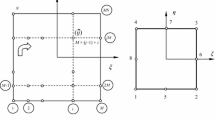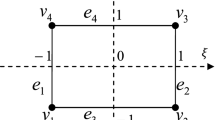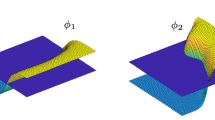Abstract
The purpose of this paper is to examine the capabilities provided by an iterative – adaptive mesh redesign method developed for the Boundary Integral Equation (BIE) method for elastoplastic analysis. In previous papers [1, 2] the fundamentals of the method where presented in elasticity and elastoplasticity. It was shown there that the adaptive procedure converges fast and is specially developed to reveal the ability of the BIE to provide high accuracy with very economic deployment of quadratic boundary and interior elements. In this paper the results of method applied on particular problems in elastoplasticity are compared against well known experimental solutions. The ability of the adaptive scheme to converge fast is demonstrated, but more important finding is the fact that the progressive refinement of the discretisation gives more insight into the physical problem.
Similar content being viewed by others
Author information
Authors and Affiliations
Corresponding author
Rights and permissions
About this article
Cite this article
Astrinidis, E., Fenner, R. & Tsamasphyros, G. Elastoplastic analysis with adaptive boundary element method. Computational Mechanics 33, 186–193 (2004). https://doi.org/10.1007/s00466-003-0519-z
Received:
Accepted:
Published:
Issue Date:
DOI: https://doi.org/10.1007/s00466-003-0519-z




